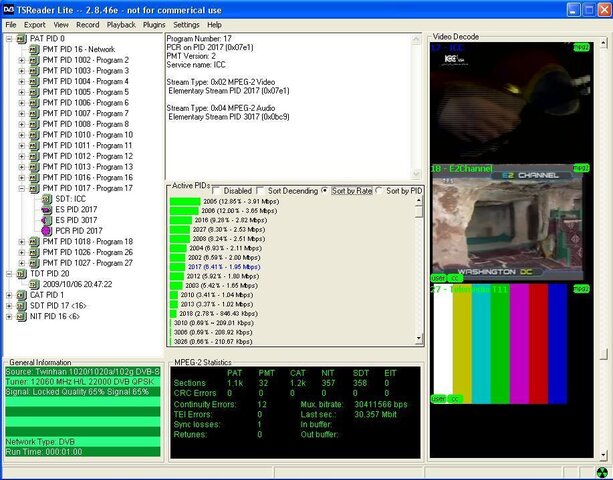If SR is 22000 then the bandwith allocated is 22 Mhz (there si also a band guard or gap to protect from adjacent interference). Assuming QPSK therefore 2 bits per symbol, ASSUMING FEC 3/4 then the total bitrate available is 22000 x 2 x 3/4 = 33 Mbps to share among all channels on the Mux. But QWERTY probably gave you what it is the most interest for you which is your actual bitrate for your channel. they might be using also variable bitrate systems , or Statistical Multiplexing to acomodate bitrates for different TV channels on the same TP on an as needed basis , in that case those QWERTY numbers vary constantly depending on the content on all channels.
taken from :
BMRC
How does MPEG video really compare to TV, VHS, laserdisc ?
VHS picture quality can be achieved for source film video at about 1 million bits per second (with proprietary encoding methods). It is very difficult to objectively compare MPEG to VHS. The response curve of VHS places -3 dB at around 2 MHz of analog luminance bandwidth (equivalent to 200 samples/line). VHS chroma is considerably less dense in the horizontal direction than MPEG source video (compare 80 samples/ line to 176!). From a sampling density perspective, VHS is superior only in the vertical direction (480 lines compared to 240)... but when taking into account interfield magnetic tape crosstalk and the TV monitor Kell factor, not by all that much. VHS is prone to timing errors (which can be improved with time base correctors), whereas digital video is fully discretized. Pre-recorded VHS is typically recorded at very high duplication speeds (5 to 15 times real time playback), which leads to further shortfalls for the format that has been with us since 1977.
Broadcast
NTSC quality can be approximated at about 3 Mbit/sec, and
PAL quality at about 4 Mbit/sec. Of course, sports sequences with complex spatial-temporal activity need more like 5 and 6 Mbit/sec, respectively.
Laserdisc is a tough one to compare. Disc is composite video (
NTSC or
PAL) with up to 425 TVL (or 567 samples/line) response. Thus it could be said laserdisc has 567 x 480 x 30 Hz "resolution". The carrier-to-noise ratio is typically better than 48 dB. Timing is excellent. Yet some of the clean characteristics of laserdisc can be achieved at 1.15 Mbit/sec (SIF rates), especially for those areas of medium detail (low spatial activity) in the presence of uniform motion. This is why some people say MPEG-1 video at 1.15 Mbit/sec looks almost as good as Laserdisc or Super VHS.
Regardless of the above figures, those clever proprietary encoding algorithms can push these bitrates even lower.
************* END OF QUOTE ************************
as you can see minimum NTSC broadcast quality is around 3 Mbps so 2 Mbps should not look good specially with fast moving images. The question is , if the engineers know all this , then why is it that such poor quality images are being transmitted every day. The all mighty dollar must be the answer and who cares as long as someone pays eh?. Yet it is unbeleivable , at least to me, that to become a professional engineer on this lands , one has to pass an ethics test. Hum? , a review of the word ethics in the dictionary I would suggest instead, lol.


